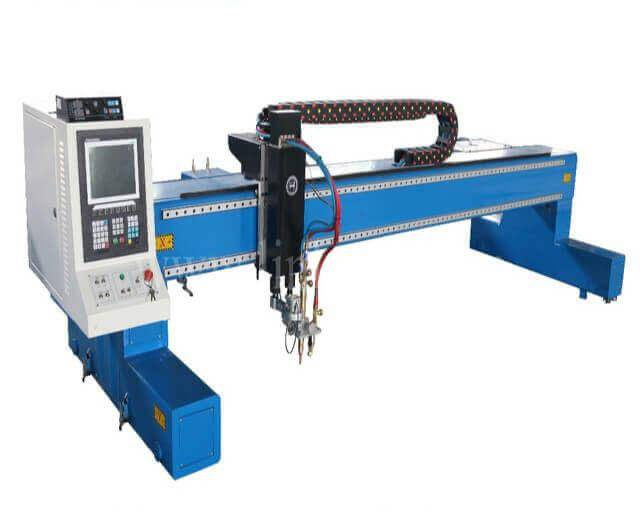
CNC (Computer Numerical Control) cutting machines have revolutionized the manufacturing industry by providing a precise and efficient way to cut materials. These machines, including those from brands like OMNICNC, use computer-aided design (CAD) software to guide the cutting process, resulting in highly accurate and intricate designs. From metal fabrication to woodworking, CNC cutting machines are used across various industries to bring concepts to life. Let's delve into the versatility of CNC cutting machines and how they enable the seamless transition from concept to creation.
The Basics of CNC Cutting Machines
Before we explore the versatility of CNC cutting machines, let's understand the basics of how these machines operate:
Working Principle
- CNC cutting machines are controlled by a computer, which reads a design file and translates it into instructions for the machine.
- The machine then moves a cutting tool or laser along multiple axes to precisely cut the material according to the design specifications.
- This precise cutting process allows for complex shapes and designs to be achieved with high accuracy.
Types of CNC Cutting Machines
- Plasma Cutters: Ideal for cutting metal sheets and pipes, plasma cutters use a high-velocity jet of ionized gas to melt and cut through the material.
- Laser Cutters: Laser cutting machines use a high-powered laser beam to cut through materials such as metal, wood, plastic, and composites with precision.
- Waterjet Cutters: Waterjet cutting machines use a high-pressure stream of water mixed with an abrasive substance to cut through a variety of materials, including metal, stone, glass, and ceramics.
Applications of CNC Cutting Machines
The versatility of CNC cutting machines makes them indispensable across a wide range of industries. Here are some common applications of CNC cutting machines:
Metal Fabrication
- CNC cutting machines are extensively used in metal fabrication to cut, shape, and form metal sheets and structures with high precision.
- They are employed in industries such as automotive, aerospace, and construction for manufacturing components and parts.
- From intricate metal designs to large-scale production, CNC cutting machines can handle a diverse range of metal cutting requirements.
Woodworking
- In the woodworking industry, CNC cutting machines are used to cut and carve wooden materials with intricate designs and patterns.
- Furniture manufacturers, cabinet makers, and artisans utilize CNC machines to achieve precision cuts and detailed engravings on wood.
- Customized furniture, wooden crafts, and decorative items are often created using CNC cutting machines in woodworking applications.
Signage and Advertising
- CNC cutting machines play a crucial role in the production of signage and advertising materials, such as letters, logos, and displays.
- Sign-making companies use CNC machines to cut various materials like acrylic, PVC, and aluminum for indoor and outdoor signage.
- The ability to create intricate and eye-catching designs with precision makes CNC cutting machines a preferred choice for signage and advertising applications.
Advantages of CNC Cutting Machines
There are several advantages to using CNC cutting machines for manufacturing and fabrication processes:
Precision and Accuracy
- CNC cutting machines offer unparalleled precision and accuracy in cutting materials, ensuring consistency in the final product.
- Complex designs and shapes can be achieved with minimal margin of error, leading to high-quality output.
Efficiency and Productivity
- By automating the cutting process, CNC machines can operate continuously and consistently without the need for manual intervention.
- This results in higher productivity levels and faster turnaround times for manufacturing projects.
Versatility and Flexibility
- CNC cutting machines can work with a wide range of materials, including metals, plastics, wood, and composites, making them versatile for different applications.
- They can accommodate various design requirements and modifications, offering flexibility in manufacturing processes.
Future Trends in CNC Cutting Technology
As technology advances, the future of CNC cutting machines looks promising with the following trends emerging:
Integration of AI and Machine Learning
- CNC machines are increasingly incorporating artificial intelligence (AI) and machine learning algorithms to optimize cutting processes and enhance efficiency.
- AI systems can analyze data in real-time to make adjustments and improvements during cutting operations, leading to enhanced performance and quality.
3D Printing and Additive Manufacturing
- The integration of 3D printing technologies with CNC cutting machines allows for additive manufacturing processes, where complex structures can be built layer by layer.
- This combination of subtractive and additive manufacturing opens up new possibilities for creating intricate designs and functional prototypes.
Remote Monitoring and Control
- CNC cutting machines are adopting remote monitoring and control capabilities, enabling operators to oversee and manage cutting processes from anywhere via connected devices.
- This remote access provides real-time updates, diagnostics, and alerts, enhancing operational efficiency and minimizing downtime.
